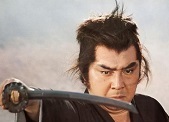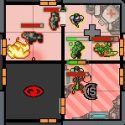|
Raenir Salazar posted:Can anyone do me a favour and link me the effort post on WWII aircombat and how it was a constant battle of compromises and the "energy bank"? Were you thinking of this vintage post? bewbies posted:I’ll try and keep this as un-spergy as I can. I will probably fail, but oh well. We’re all nerds here.
|
|
|
|

|
| # ? Jun 1, 2024 04:58 |
|
Wow today is a good day for posting in this thread.BattleMoose posted:Thatch Weave: Jobbo touched on these considerations before but there's a few really important bits of context for the weave that are non-obvious and were definitely weighing on Thach's mind. It was developed in the aftermath of Coral Sea. In that battle, the US lucked out and their torp bombers didn't get much enemy attention, but their dive bombers definitely did, and it became clear to the guys there that fighters needed to be right on hand to their bombers, something like 3k feet above worked well (the other, incredibly wrong lesson that got learned was that the dive bombers would get the most attention so the escort should focus on them, which is how Hornet's fighters wound up circling high over the target while their torpedo bombers died as part of the single worst deck strike of the war). The next was the action defending the carriers from the Japanese strike. The first fighters went out high with the idea that they could always dive on the torp bombers. This didn't work, they couldn't get visual contact, and defense against the torp bombers fell to whatever fighters were just launching and the SBDs that had been put up to supplement the CAP (US carriers up through Coral were very constrained in fighter capacity, with about eighteen fighters, which isn't enough when you understand that due to scheduling and resupply constraints, they had to be split between strike and CAP duties, and in both cases had to deal with multiple strike squadrons at different levels, so Sherman (iirc) on the Yorktown had come up with the idea of refueling the dive bombers coming back from scouting duty and using them to help attack torp bombers). The first fighters had an okay time of it, since they had decent energy, but especially the later guys had an awful time of it, either trying to climb to intercept or fighting at low level without energy advantage to make repeated passes, and they wound up having their wing pairs break up under the strain of repeated attack and trying just to survive, while the Japanese did a great job of working in concert (they trained really hard at that). That did however do a decent job of neutralizing the fighters and some Japanese squadrons got beat up pretty badly. Finally was a half solution to one problem by the introduction of another. The F4F-4 was just starting to come out, and Thach was not a happy camper about it. The F4F-3 and 3A they'd been using had fixed wings and four guns with deep reserves of ammo. The 4 introduced folding wings, and at the request of the British changed the four guns to six. The plane carried less ammo total as well as using it faster, and even then was much heavier. That hurt performance, especially climb. However that let them go to nearly 30 fighters in a squadron so it was probably worth it (that's why later versions like the FM-2 go back to 4 guns incidentally, the -4 got ripped on hardcore by the USN pilots). So adding it all up: Bombers, including torpedo bombers, need escort nearby, and CAP flights need interceptors at bomber level, as well as the fighter they have climbing slowly enough hasty launches might not be able to attack from their chosen altitude. That means engagements with zeroes in an unfavorable energy state where the zeroes can fight with their strengths. One fighter didn't have a great chance, even with turning into attacks to give a nasty high deflection shot, although that had been helpful. That meant a formation that would be resilient under attack even when attacked from above. The weave neatly solved all those problems, it didn't require an altitude advantage and because it was flown with a constant eye on the other guy it would hold together under stress.
|
|
|
|
Jobbo_Fett posted:And then you have close air support aircraft that had their own formation when near/over their target. I forget if it has a specific name, but the example I remember involved a flight of 4 Bf-110s. Now, imagine them flying in a horizontal circle at the 12, 3, 6, and 9 positions. Each plane would fly in a (counter)clockwise manner and circle their target. One plane would break off and commence an attack run against its target and then egress to a safe distance before returning in the circle, repeat until out of ammo, target destroyer, enemy aircraft, etc. The formation allowed them to mutually support eachother and present themselves as a constant threat to any forces below. Shooting at the incoming plane means the other(s) may attack you, not shooting lets them attack freely, what if two aircraft attack at the same time, etc. Lufberry!
|
|
|
|
MrMojok posted:Lufberry!
|
|
|
|
I just finished reading The Mint by TE Lawrence. That last loving line hits you hard when you know what happened to him  . The dude just found happiness at last. . The dude just found happiness at last.
|
|
|
|
|
But was something similar to the Thatch Weave used in Europe? If you were in an American or British formation and the Germans were chasing you what did you do to protect the Boss? Did you break off and slow turn or break off and tried to turn around to intercept? e: Basically I'm not sure what it means to provide "cover" beyond warning of "Hey there's a guy behind us, check 6!" bewbies posted:Were you thinking of this vintage post? Exactly! Thanks! Raenir Salazar fucked around with this message at 17:33 on Jul 26, 2016 |
|
|
|
Jobbo_Fett posted:Those that didn't use it originally used a formation called "The Vic" or "V" formation. The downside to this was that you had one lead plane and 2 wingmen, which limited its tactical capabilities as the flight didn't have the same amount of protection. Is this what the British used? I am immediately reminded of the stupid trench run scene in Star Wars, and I know most of the space battle choreography was ripped off from British WWII films. It always infuriates me that the wingmen don't actually bother to do anything, they sit there waiting to die.
|
|
|
|
Since we talked earlier about Lindybeige being bad, here, have some more bad because The War Nerd talks about the 30YW in this post: https://pando.com/2014/08/24/the-war-nerd-today-is-the-200th-anniversary-of-the-wimpy-so-called-burning-of-washington/
|
|
|
|
darthbob88 posted:That's a different thing. The term I've heard for that CAS circle of death is just "circle of death".
|
|
|
|
Kemper Boyd posted:Since we talked earlier about Lindybeige being bad, here, have some more bad because The War Nerd talks about the 30YW in this post: https://pando.com/2014/08/24/the-war-nerd-today-is-the-200th-anniversary-of-the-wimpy-so-called-burning-of-washington/
|
|
|
|
PittTheElder posted:Is this what the British used? I am immediately reminded of the stupid trench run scene in Star Wars, and I know most of the space battle choreography was ripped off from British WWII films. It always infuriates me that the wingmen don't actually bother to do anything, they sit there waiting to die. Early on in the war the RAF was still flying Vs, which, no poo poo, was based mostly around airshow flying. Like, they were so concerned with looking good at airshows they didn't really let the doctrine evolve. The Luftwaffe used the same approach early in the 30s, but they kind of accidentally figured out the finger four in Spain and it was a huge advantage early on in the air war. Elements of 3 didn't work well at all....it was fundamentally unstable, each pilot tended to go off chasing his own targets and all manner of chaos reigned. Pairs were a lot easier to do, spread formations of 4 aircraft were harder to spot, harder to attack, etc etc.
|
|
|
HEY GAL posted:i'm not going to click on that because i am squeamish and vulnerable to open displays of dumb, plz summarize for me 30 YW hater posted:The Swedes annihilated the entire population of some German regions. By consensus accounts, they destroyed something like 1500 towns, and the notion of sparing the civilian population of those places didn’t even enter their Abba-singing blond heads. It was SOP to kill everybody in the town, rape every woman and girl in the place, steal everything worth taking, and burn every building, be it ever so humble, to ashes. And it wasn’t any sudden attack of conscience that made the Swedes turn peacenik, it was Peter the Great teaching them what happened when you tried to attack the Russians on their own turf. Apparently only Swedish troops committed the bog standard "war crimes" of the era by killing the people that you steal food from, and burning down their own winter quarters.
|
|
|
|
|
Chillyrabbit posted:Apparently only Swedish troops committed the bog standard "war crimes" of the era edit: sop? unless you're deliberately making an example of a recalcitrant area (this is what Holck did for Wallenstein, and it's why his cav has such a terrible reputation) that's the last thing your commanders want you to do. HEY GUNS fucked around with this message at 18:37 on Jul 26, 2016 |
|
|
|
HEY GAL posted:well it's a change from "only Imperialist troops committed the bog standard war crimes of the era," at least It also goes "and they only did this to non-Protestants." Someone should ask Saxony and Brandenburg about how cool & ownage it is to have a Swedish army trampin' across your lands.
|
|
|
|
Kemper Boyd posted:It also goes "and they only did this to non-Protestants." Someone should ask Saxony and Brandenburg about how cool & ownage it is to have a Swedish army trampin' across your lands. edit: i wonder how he can tell that everyone working for the swedes was a protestant HEY GUNS fucked around with this message at 18:41 on Jul 26, 2016 |
|
|
HEY GAL posted:In general, it's like..."if people think well of you," but there are also certain places in life that are honorable by definition (soldiers, guilds) or dishonorable by definition (executioners, shepherds, tanners). How that works out is different for different sexes, different Staende, and different stages of life: an honorable woman, unless she is a farmhand or working-class woman and it's 19th century germany, must be chaste (see The Village In Court for more of this--what I'm translating as farmhand is the level below the peasants--these people don't have their own property, they do agricultural work for peasants. For a woman from that group to be honorable and valued she has to be a strong worker and a reliable companion, nobody cares about her bastard kids if she's got any). Soldiers don't have to be chaste (lol), but journeymen and full guild members should. But apprentices don't have to; in fact, it's fine and good for them to visit official city brothels. What I find really interesting is all the memes floating around Facebook about how people would be less "offended" all the time if dueling was brought back. Which is getting it exactly backwards.
|
|
|
|
|
Chillyrabbit posted:Apparently only Swedish troops committed the bog standard "war crimes" of the era by killing the people that you steal food from, and burning down their own winter quarters. HEY GUNS fucked around with this message at 20:11 on Jul 26, 2016 |
|
|
|
Armyman25 posted:What I find really interesting is all the memes floating around Facebook about how people would be less "offended" all the time if dueling was brought back. Which is getting it exactly backwards.
|
|
|
|
HEY GAL posted:on the same note, consider that we have just as much opportunity to sue that these guys do, but we don't sue people for dishonoring us as often as they did. That thing about perceived insult resulting in direct violence reminds me of some people I've known. Most of them are ex-boxers or some other kind of athlete, a few are punk rockers, and one is low level associated with some gang. They were all ready to go at the slightest hint of an insult. Most of 'em did time as a result, but it seems like those guys would blend happily into one of your regiments.
|
|
|
|
Grand Prize Winner posted:That thing about perceived insult resulting in direct violence reminds me of some people I've known. Most of them are ex-boxers or some other kind of athlete, a few are punk rockers, and one is low level associated with some gang. They were all ready to go at the slightest hint of an insult. Most of 'em did time as a result, but it seems like those guys would blend happily into one of your regiments. edit: you don't have to threaten to hurt people though, you can just sue 'em and spend all your time in court. schutze and steter got into one fight on their way back from court to settle a previous fight  so the 21st century transplant to one of my regiments could keep honor intact without having to murder his comrades. edit 2: those dudes might end up doing time at the Provost's or something--just because these guys fight one another all the time doesn't mean the officers have to like it, it's a huge hassle when their soldiers kill one another instead of whoever it is they're payed to kill HEY GUNS fucked around with this message at 21:01 on Jul 26, 2016 |
|
|
|
HEY GAL posted:on the same note, consider that we have just as much opportunity to sue that these guys do, but we don't sue people for dishonoring us as often as they did. A friend who's a lawyer said that in these days, only whores and maniacs sue people for slander. Btw, the Great Northern War actually had a bunch of war crimes committed by the Swedes, mostly in Russia because they were shaking down the Russian population for any food that hadn't been either set ablaze or evacuated by Peter the Great's forces. The War Nerd's view is also wrong because up until the learly 19th century, Sweden kept acting like it's a great power and starting several wars with Russia that didn't really work out. Sweden didn't stop acting like a great power before they lost Finland to Russia.
|
|
|
|
Kemper Boyd posted:Sweden didn't stop acting like a great power before they lost Finland to Russia. It's fortunate that they didn't participate in the Crimean War, things could have turned really awkward for everyone. Well, apart from them taking Åland when offered, that could have made some things less awkward later on.
|
|
|
Armyman25 posted:What I find really interesting is all the memes floating around Facebook about how people would be less "offended" all the time if dueling was brought back. Which is getting it exactly backwards. Fun fact, if this ever happens I have plans to be a sort of 'second for hire'. I'll even provide the pistol and shot, bring your own sword though! Nenonen posted:It's fortunate that they didn't participate in the Crimean War, things could have turned really awkward for everyone. Now I am wondering how bad the 1840's Swedish army was compared to the British.
|
|
|
|
|
Armyman25 posted:What I find really interesting is all the memes floating around Facebook about how people would be less "offended" all the time if dueling was brought back. Which is getting it exactly backwards. When I was doing 19th century British swordsmanship research, I found some articles in newspapers and magazines complaining about how no one dueled with swords any more and that fewer stabbings were contributing to the Moral Decline of the Youth. I love that people complaining about the kids these days haven't changed a bit since centuries. Now they use lovely jpgs on facebook instead of florid Victorian prose to whine, though.
|
|
|
|
Grenrow posted:When I was doing 19th century British swordsmanship research, I found some articles in newspapers and magazines complaining about how no one dueled with swords any more and that fewer stabbings were contributing to the Moral Decline of the Youth. I love that people complaining about the kids these days haven't changed a bit since centuries. Now they use lovely jpgs on facebook instead of florid Victorian prose to whine, though. is england the outlier?
|
|
|
|
Grenrow posted:When I was doing 19th century British swordsmanship research, I found some articles in newspapers and magazines complaining about how no one dueled with swords any more and that fewer stabbings were contributing to the Moral Decline of the Youth. I love that people complaining about the kids these days haven't changed a bit since centuries. Now they use lovely jpgs on facebook instead of florid Victorian prose to whine, though. Only a matter of time until someone dies in a Pokemon Go related duel.
|
|
|
|
Hey guys, the BBC are bringing back Time Commanders, a show in which people play Total War: Rome while a panel of ex-soldiers pretends to seriously analyse their performance for a comfortable appearance fee; hilariously fun entertainment for at least some of the family. (If you've never seen it, there are plenty of uploads available on a popular video-sharing website). ...Anyone want to apply with me?
|
|
|
|
If I lived in Britain I'd be all over that. Time Commanders was the poo poo.
|
|
|
|
HEY GAL posted:is england the outlier? Siivola fucked around with this message at 21:23 on Jul 26, 2016 |
|
|
|
HEY GAL posted:this was actually a thing i was wondering about--19th century germans stab one another all the freaking time, members of the bourgeoisie and the army love duelling. (we think it's aristocratic and atavistic but in germany it's actually bourgeois and modern. weird.) austro-hungarian officers too. also civilians in italy and spain. french people got into duels over marie loving curie and this happened so late i posted youtubes of it in the fencing thread. I'm not 100% sure about dueling in England. These articles were from the really really late 19th century, like 1880s-1890s, so this is perhaps more reflective of the end of the century than the beginning. I think I've read before that the English generally dueled with pistols rather than the sword, which was more of a French/German/Italian thing? I read one officer's recollections of his education where he specifically mentioned that he learned to duel with broad-swords during his time at some German academy, and recommended that sort of experience for anyone being sent to India. I suppose he thought that broadsword combat was more applicable to fighting Indian swordsmen than the more-French influenced swordsmanship more commonly taught in England at the time.
|
|
|
|
my friend, you need to google mensur fighting 
|
|
|
|
Siivola posted:They kinda are, I think. By 19th century I'm fairly sure both they and 'Muricans had already transitioned to shooting each other – which conversely failed to catch on on the continent, right? HEY GUNS fucked around with this message at 21:32 on Jul 26, 2016 |
|
|
|
HEY GAL posted:my friend, you need to google mensur fighting Yeah, that's probably what he's talking about. It's funny, he mentions the dueling and his hunting rifle practice, but not a thing about any sort of technical military education. Some British officers were terrified at the idea of being sent to India and having to fight dudes with swords, but then you get a few who were really
|
|
|
|
Trin Tragula posted:Hey guys, the BBC are bringing back Time Commanders, a show in which people play Total War: Rome while a panel of ex-soldiers pretends to seriously analyse their performance for a comfortable appearance fee; hilariously fun entertainment for at least some of the family. (If you've never seen it, there are plenty of uploads available on a popular video-sharing website). Goddamn I hope they do a US version. Because I'd be all over that like flies on the naked corpse of a defeated mercenary.
|
|
|
|
HEY GAL posted:my friend, you need to google mensur fighting That still exists, btw. More as a niche, uh, "hobby", and whoever's doing it is pretty much 100% guaranteed to be a Nazi, but it's still around
|
|
|
|
Trin Tragula posted:Hey guys, the BBC are bringing back Time Commanders, a show in which people play Total War: Rome while a panel of ex-soldiers pretends to seriously analyse their performance for a comfortable appearance fee; hilariously fun entertainment for at least some of the family. (If you've never seen it, there are plenty of uploads available on a popular video-sharing website). Amazing, Time Commanders was the stupidest, most low rent TV ever dreamed up, I'm so glad it's back.
|
|
|
|
System Metternich posted:That still exists, btw. More as a niche, uh, "hobby", and whoever's doing it is pretty much 100% guaranteed to be a Nazi, but it's still around Hear that heygal? You have a legit opportunity to stab nazis with your sword.
|
|
|
|
Cut. The mensur blades are, eh, pointless.
|
|
|
|
aag
|
|
|
|

|
| # ? Jun 1, 2024 04:58 |
|
What? Not even a cutting remark in rispote?
|
|
|











 Yes, it's like a lava lamp.
Yes, it's like a lava lamp.




















